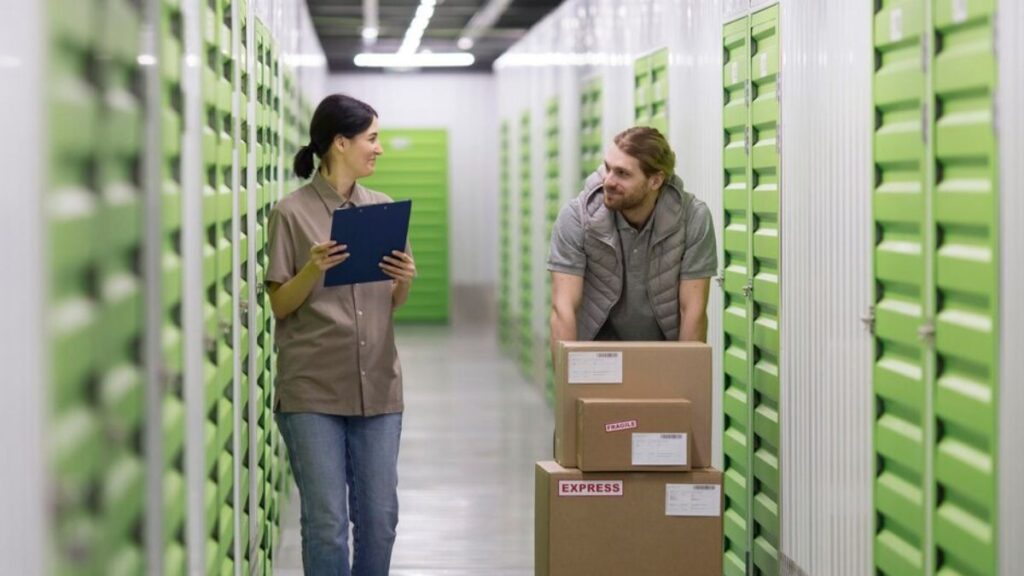NippyBox, In the ever-evolving landscape of technology and sustainability, the emergence of innovative products that seamlessly integrate functionality with eco-consciousness is paramount. One such groundbreaking development is the NippyBox—a versatile storage solution that not only caters to the modern individual’s organizational needs but also aligns with the pressing demands of environmental responsibility.
The Nippy-Box stands as a testament to how design, technology, and sustainability can converge to create a product that serves both practical and ethical purposes. This comprehensive exploration delves into the Nippy-Box’s design philosophy, its environmental impact, and the broader implications of adopting such innovative solutions in our daily lives.
The Genesis of NippyBox
The inception of the NippyBox was driven by a collective desire to address two primary concerns: the growing need for efficient storage solutions and the escalating environmental challenges posed by traditional packaging materials. Recognizing that conventional storage options often contribute to clutter and utilize non-recyclable materials, the creators of the Nippy-Box sought to develop a product that would not only organize spaces but also minimize ecological footprints.
Through meticulous research and development, the Nippy-Box was conceptualized as a modular, durable, and eco-friendly alternative to existing storage solutions. Its design incorporates sustainable materials, energy-efficient manufacturing processes, and a commitment to reducing waste, positioning it as a frontrunner in the movement towards sustainable consumer products.
Design Philosophy: Functionality Meets Sustainability
At the heart of the NippyBox’s design is its commitment to functionality without compromising environmental integrity. The product boasts several key features that underscore this philosophy:
-
Modular Design: The NippyBox is engineered to be adaptable, allowing users to customize their storage solutions based on individual needs. This flexibility reduces the necessity for multiple storage units, thereby conserving resources and minimizing waste.
-
Sustainable Materials: Constructed from recycled and biodegradable materials, the NippyBox ensures that its production and disposal have minimal environmental impact. By utilizing materials that are both durable and eco-friendly, the product extends its lifecycle and reduces the need for frequent replacements.
-
Energy-Efficient Manufacturing: The production process of the Nippy-Box employs energy-efficient techniques that lower carbon emissions and reduce energy consumption. This approach not only conserves resources but also sets a benchmark for sustainable manufacturing practices in the industry.
-
Minimalist Aesthetic: Embracing a minimalist design, the Nippy-Box eliminates unnecessary components and packaging, further reducing its environmental footprint. Its sleek and simple appearance ensures that it complements various interior styles while promoting sustainability.
Environmental Impact: A Step Towards a Greener Future
The environmental implications of adopting the NippyBox are profound. By choosing this innovative storage solution, consumers contribute to several positive ecological outcomes:
-
Reduction in Plastic Waste: Traditional storage solutions often rely on plastic materials that are non-biodegradable and contribute to long-term pollution. The NippyBox’s use of recyclable materials helps mitigate this issue, promoting a circular economy.
-
Conservation of Resources: The modular nature of the Nippy-Box encourages consumers to purchase only what they need, reducing overconsumption and the depletion of natural resources.
-
Lower Carbon Footprint: Through energy-efficient manufacturing processes and the use of sustainable materials, the NippyBox’s production emits fewer greenhouse gases compared to conventional storage solutions, aiding in the fight against climate change.
-
Promotion of Recycling: By utilizing recycled materials in its construction, the Nippy-Box not only reduces waste but also encourages the recycling of other products, fostering a culture of sustainability.
Adoption and Impact: Real-World Applications
The adoption of the NippyBox extends beyond individual consumers to various sectors, including education, healthcare, and retail. In educational settings, the NippyBox serves as an efficient storage solution for classroom materials, promoting organization and reducing clutter. In healthcare facilities, its hygienic and easy-to-clean design ensures that medical supplies are stored safely and accessibly.
Retailers have also recognized the benefits of incorporating the Nippy-Box into their operations. By utilizing these storage solutions, businesses can streamline inventory management, reduce packaging waste, and enhance their sustainability credentials, appealing to environmentally conscious consumers.
Challenges and Considerations
While the NippyBox represents a significant advancement in sustainable storage solutions, its widespread adoption is not without challenges. Factors such as consumer awareness, cost considerations, and the availability of sustainable materials can impact the rate at which such products are embraced.
To overcome these hurdles, it is essential to invest in consumer education, highlighting the long-term benefits of sustainable products. Additionally, collaborations between manufacturers, retailers, and policymakers can facilitate the development of incentives and infrastructure that support the adoption of eco-friendly solutions.
The Future of Sustainable Storage Solutions
Looking ahead, the NippyBox stands as a model for the future of sustainable consumer products. Its success underscores the potential for innovation to drive positive environmental change. As technology advances and consumer preferences evolve, the demand for products that marry functionality with sustainability is expected to grow.
The continued development of the NippyBox and similar products will likely lead to further innovations in materials science, manufacturing processes, and design methodologies. These advancements will not only enhance the performance and appeal of sustainable storage solutions but also contribute to the broader goal of achieving environmental sustainability.
Conclusion
The NippyBox exemplifies how thoughtful design and innovation can converge to create products that are both functional and environmentally responsible. By addressing the dual challenges of efficient storage and ecological impact, the NippyBox offers a compelling solution for consumers seeking to make sustainable choices in their daily lives.
As we continue to navigate the complexities of environmental conservation, products like the NippyBox serve as beacons of progress, demonstrating that sustainability and practicality can coexist harmoniously. Through collective efforts and a commitment to innovation, we can pave the way for a future where consumer products contribute positively to the planet’s well-being.


